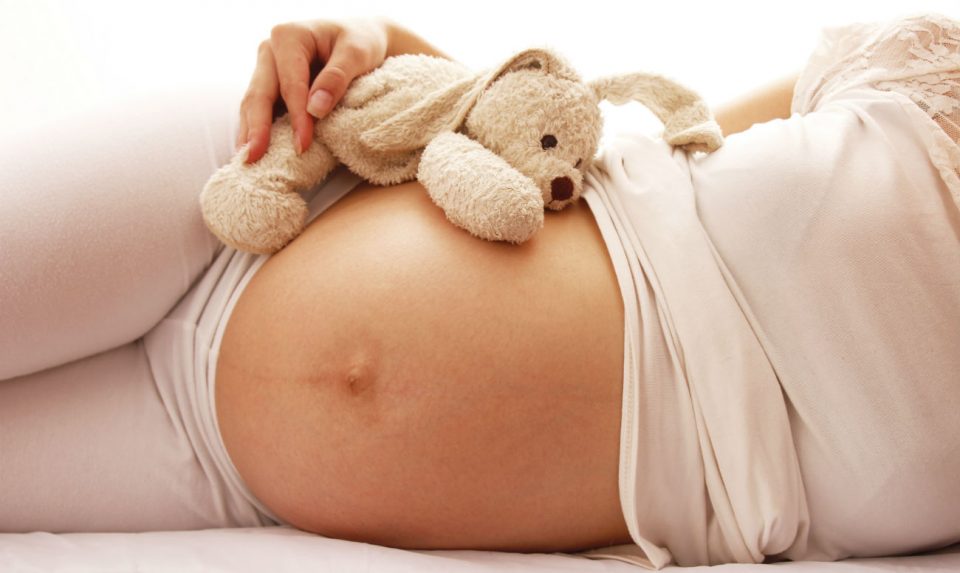Urinary tract infections (UTIs) are not uncommon during pregnancy. Women who are first faced with this situation and with an exacerbation of a chronic, pre-existing disease turn to urologists.
Pregnant women are more vulnerable to urinary tract infections, since the woman’s body experiences a state of physiological immunodeficiency, which makes it more susceptible to various kinds of infectious factors. And the urinary system is not least subject to inflammatory processes, especially if all chronic diseases have not been treated before pregnancy.
The second point affecting the UTI is the growing “pregnant” uterus, which, as it grows, begins to squeeze the ureter (more of the right one), thereby causing impaired urine flow. On ultrasound, in this case, you can see calicopyelectasia – an expansion of the calyces and pelvis of the kidneys. This is a physiological condition, but it can contribute to the development of infection.
Because you are at increased risk of developing a urinary tract infection during pregnancy, you will periodically have urinalysis and culture to help diagnose possible UTIs early. How often, the gynecologist observing the pregnancy will tell. If there are changes in the urine tests, you will be referred to a urologist, do not be surprised, urologists treat not only men, who will continue to deal with UTIs.
There are several conditions that characterize UTI during pregnancy:
First: if there are complaints of dysuria (frequent painful urination, blood in the urine) or pain in the lumbar region + fever, and urine tests show an increased number of leukocytes and / or red blood cells, this is an obvious UTI that must be treated with antibacterial drugs.
But there is a second option: nothing bothers, the general urine analysis is normal, but there are bacteria in the urine culture (the concentration of the bacteria should be more than 10 * 5 CFU / ml in two crops with an interval of 7-10 days, and in both crops it should be the same bacteria) – this condition is called asymptomatic bacteriuria, which also requires antibiotic therapy.
The question that is asked very often: “Why should I drink antibiotics if I feel good?”
– Yes, of course, there may be no symptoms of UTI, but the presence of a large titer of bacteria in the urine can further complicate the course of labor and the postpartum period, up to premature birth and intrauterine infection of the fetus, and also develop into an “explicit” form of UTI with the presence of symptoms !
I would also like to note that you should not be afraid of antibiotics (often after mentioning them, women begin to worry) and their possible impact on the child. There is a specific list of acceptable antibacterial drugs in different trimesters of pregnancy!
In the first trimester, it is allowed to use: protected penicillins (Ampicillin, Amoxicillin / clavulonate, Amoxicillin / sulbactam), Fosfomycin trometalol (Monural) (can be used in all trimesters), macrolides (Josamycin, Azithromycin). In the second and third trimester: the third generation cephalosporins (Cefixime, Ceftriaxone, Cefotaxime, Ceftazidime) are added to the first list. But remember that taking certain medications, and especially during pregnancy, should only be prescribed by a doctor.
In addition to antibiotics, herbal uroantiseptics (Fitolizin, Kanefron, Cyston, etc.) are often prescribed during pregnancy as supportive therapy along with antibacterial drugs. Quite often, gynecologists prescribe them as a preventive measure, sometimes for the entire duration of pregnancy. But they should not be abused, and even more so taken on their own without a doctor’s recommendation, since they can contribute to the formation of oxalate stones with prolonged continuous use, especially if there are already violations of mineral metabolism, as they sometimes say, “sand” in the kidneys by ultrasound. They should be taken in courses with breaks, the duration of the course is determined only by the doctor!
Unfortunately, sometimes conventional antibiotic therapy is not effective (especially in chronic processes) and one has to resort to invasive techniques such as cystoscopy followed by instillations into the bladder. Cystoscopy, as well as instillations into the bladder, are carried out only according to strict indications, only in those cases when you really cannot do without them! But sometimes you have to resort to these methods during pregnancy, so you should not be surprised if your doctor prescribes the above studies and procedures.
Finally, I would like to tell you more about such a condition as Calicopyelectasis during pregnancy. As mentioned earlier, calicopyelectasis is a physiological condition during pregnancy, but it happens that against the background of the expanded renal calyx system (PCS), a bacterial infection joins (especially with poorly treated chronic pyelonephritis and cystitis).
In such conditions as: the presence of chronic pyelonephritis in the active phase + expansion of the PCS, as well as pain syndrome (for example, caused by an acute infectious process or renal colic (stone migration along the urinary tract) – kidney stenting is performed.
A stent is a specially designed tube made of flexible plastic material that is inserted into the ureter, allowing the so-called “closed drainage” of the urinary tract. The stents are specially designed to be positioned in the urinary system. The upper and lower parts of the stent are rounded – curls that prevent The stent is placed using a special instrument – a cystoscope or a ureteroscope, which is passed into the bladder through the urethra (urethra).
The stent can be in the body for a long time (up to 3 months or more) until delivery. Depending on the quality of the stent, it may need to be replaced in 2-3 months. The stent is also removed by means of a cysto- or ureteroscope. It is worth saying that the presence of a stent in the body can cause some side effects: more frequent than usual, the urge to urinate, blood in the urine, a feeling of incomplete emptying of the bladder, pain in the kidney area during urination and outside of it.
As a prevention of problems in the work of theurinary system https://en.wikipedia.org/wiki/Urinary_system and to help the kidneys during pregnancy, it is very useful to do the “drainage position” exercise – this is standing in the knee-elbow position for 5-10 minutes several times a day (preferably more than 5 times, but the more often the better).
In conclusion, I would like to say that although pregnancy is associated with some additional risks, it is a natural and wonderful state of the female body! The main thing to remember is that if you have any questions or complaints, you do not need to be afraid, you need to contact the appropriate specialist in time.
Urinary tract infections (UTIs) are not uncommon during pregnancy. Women who are first faced with this situation and with an exacerbation of a chronic, pre-existing disease turn to urologists.
Pregnant women are more vulnerable to urinary tract infections, since the woman’s body experiences a state of physiological immunodeficiency, which makes it more susceptible to various kinds of infectious factors. And the urinary system is not least subject to inflammatory processes, especially if all chronic diseases have not been treated before pregnancy.
The second point affecting the UTI is the growing “pregnant” uterus, which, as it grows, begins to squeeze the ureter (more of the right one), thereby causing impaired urine flow. On ultrasound, in this case, you can see calicopyelectasia – an expansion of the calyces and pelvis of the kidneys. This is a physiological condition, but it can contribute to the development of infection.
Because you are at increased risk of developing a urinary tract infection during pregnancy, you will periodically have urinalysis and culture to help diagnose possible UTIs early. How often, the gynecologist observing the pregnancy will tell. If there are changes in the urine tests, you will be referred to a urologist, do not be surprised, urologists treat not only men, who will continue to deal with UTIs.
There are several conditions that characterize UTI during pregnancy:
First: if there are complaints of dysuria (frequent painful urination, blood in the urine) or pain in the lumbar region + fever, and urine tests show an increased number of leukocytes and / or red blood cells, this is an obvious UTI that must be treated with antibacterial drugs.
But there is a second option: nothing bothers, the general urine analysis is normal, but there are bacteria in the urine culture (the concentration of the bacteria should be more than 10 * 5 CFU / ml in two crops with an interval of 7-10 days, and in both crops it should be the same bacteria) – this condition is called asymptomatic bacteriuria, which also requires antibiotic therapy.
The question that is asked very often: “Why should I drink antibiotics if I feel good?”
– Yes, of course, there may be no symptoms of UTI, but the presence of a large titer of bacteria in the urine can further complicate the course of labor and the postpartum period, up to premature birth and intrauterine infection of the fetus, and also develop into an “explicit” form of UTI with the presence of symptoms !
I would also like to note that you should not be afraid of antibiotics (often after mentioning them, women begin to worry) and their possible impact on the child. There is a specific list of acceptable antibacterial drugs in different trimesters of pregnancy!
In the first trimester, it is allowed to use: protected penicillins (Ampicillin, Amoxicillin / clavulonate, Amoxicillin / sulbactam), Fosfomycin trometalol (Monural) (can be used in all trimesters), macrolides (Josamycin, Azithromycin). In the second and third trimester: the third generation cephalosporins (Cefixime, Ceftriaxone, Cefotaxime, Ceftazidime) are added to the first list. But remember that taking certain medications, and especially during pregnancy, should only be prescribed by a doctor.
In addition to antibiotics, herbal uroantiseptics (Fitolizin, Kanefron, Cyston, etc.) are often prescribed during pregnancy as supportive therapy along with antibacterial drugs. Quite often, gynecologists prescribe them as a preventive measure, sometimes for the entire duration of pregnancy. But they should not be abused, and even more so taken on their own without a doctor’s recommendation, since they can contribute to the formation of oxalate stones with prolonged continuous use, especially if there are already violations of mineral metabolism, as they sometimes say, “sand” in the kidneys by ultrasound. They should be taken in courses with breaks, the duration of the course is determined only by the doctor!
Unfortunately, sometimes conventional antibiotic therapy is not effective (especially in chronic processes) and one has to resort to invasive techniques such as cystoscopy followed by instillations into the bladder. Cystoscopy, as well as instillations into the bladder, are carried out only according to strict indications, only in those cases when you really cannot do without them! But sometimes you have to resort to these methods during pregnancy, so you should not be surprised if your doctor prescribes the above studies and procedures.
Finally, I would like to tell you more about such a condition as Calicopyelectasis during pregnancy. As mentioned earlier, calicopyelectasis is a physiological condition during pregnancy, but it happens that against the background of the expanded renal calyx system (PCS), a bacterial infection joins (especially with poorly treated chronic pyelonephritis and cystitis).
In such conditions as: the presence of chronic pyelonephritis in the active phase + expansion of the PCS, as well as pain syndrome (for example, caused by an acute infectious process or renal colic (stone migration along the urinary tract) – kidney stenting is performed.
A stent is a specially designed tube made of flexible plastic material that is inserted into the ureter, allowing the so-called “closed drainage” of the urinary tract. The stents are specially designed to be positioned in the urinary system. The upper and lower parts of the stent are rounded – curls that prevent The stent is placed using a special instrument – a cystoscope or a ureteroscope, which is passed into the bladder through the urethra (urethra).
The stent can be in the body for a long time (up to 3 months or more) until delivery. Depending on the quality of the stent, it may need to be replaced in 2-3 months. The stent is also removed by means of a cysto- or ureteroscope. It is worth saying that the presence of a stent in the body can cause some side effects: more frequent than usual, the urge to urinate, blood in the urine, a feeling of incomplete emptying of the bladder, pain in the kidney area during urination and outside of it.
As a prevention of problems in the work of the urinary system and to help the kidneys during pregnancy, it is very useful to do the “drainage position” exercise – this is standing in the knee-elbow position for 5-10 minutes several times a day (preferably more than 5 times, but the more often the better).
In conclusion, I would like to say that although pregnancy is associated with some additional risks, it is a natural and wonderful state of the female body! The main thing to remember is that if you have any questions or complaints, you do not need to be afraid, you need to contact the appropriate specialist in time.
